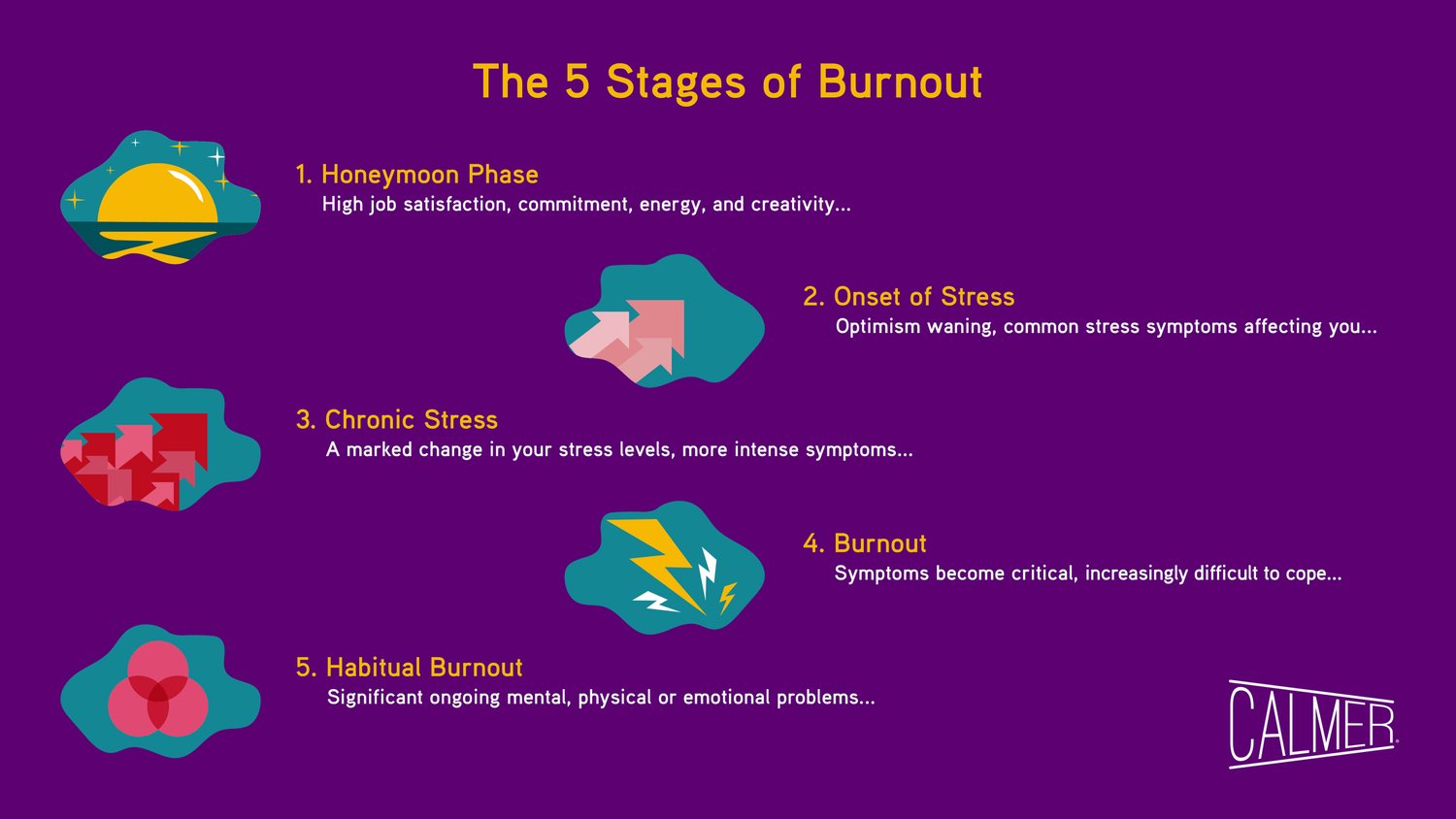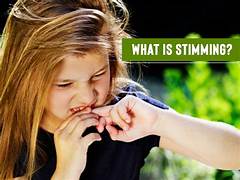When Sibling Jealousy Becomes a Cause for Concern
SGUK Episode 123
Introduction
“A recent study in the Journal of Family Psychology found that strained family relationships rooted in jealousy can cause health issues and chronic illness to worsen. One way of thinking about jealousy or envy between siblings is that we think we are competing for limited resources or status.”
We can all think of people we know, in or outside of our family or friend circle that this podcast is applicable to. In our case I would ask that you think of examples of families who are in business together and how any such tension existing in that kind of framework does impact on the business – not to mention the severe impact on the health and well being of the individuals who feel that they are competing for resources or status. Taking examples to another level, I ask you to think of hereditary Monarchies and in particular the UK Monarchy.
The structure of a hereditary Monarchy is such that the way members within it are treated is based upon order of birth. There is no equality of treatment – the concept it totally alien to that construct. Family members are deliberately made to be rubbing rags to the ones above them, particularly the first born. Those in the Line of Succession are treated with deference based on their position in the line up. The heir to the Throne is treated with reverence from the day they are born, and are allocated more resources and attention than any of their siblings. Even the rooms that they are reside in are larger and better furnished than those allocated to their siblings. The Heir is told daily in a variety of ways that they are better and more important than their siblings, and in fact that that being Royal is better than anyone else outside of the Monarchy family. The Heir/First in Line to the Throne, is never refused any request. Always told that they are the best and can do no wrong. On the occasions that they transgress and do something that would not be seen in a favourable light, they are never publicly chastised for that deed and in fact very unlikely that they would be admonished at all. Historically Monarcy family had another person allocated to receive the punishment of the deed carried out by the Heir. These individuals were known as Whipping Boys.
Taking an extract from a previous podcast looking at the 1000+ years of UK Monarchies, there was a section on Whipping Boys and the historical nature of the terminology used, which in itself would create division. Some modern day historian doubt the concept of Whipping Boys, but many references that I read 3 years ago when researching into this phenomenon was that it was initially slaves used to take the punishment of the actions of a member of the Royal family, and as we know, records of the experiences of slaves or rather the actions of their white Masters, were rarely recorded or if were details skimmed over the true horrors. Worth keeping that in mind if you ever go searching for the history of Whipping Boys.
Today’s monarchy – with Queen Elizabeth II at the helm – has officially adapted and reinvented itself through two world wars and social revolution. Ie most of the publications by Royal historians including the comedy store group of sycophants write things in order to keep employment and to ensure that the indoctrination continues, as it has done through centuries. On a personal perspective, I do not see any evidence of the UK Royal Family reinventing itself, it has been more of ensuring that the general public see, hear and read the message that the Royal Family and government officials wish to give, and with the unwritten contract with the media in place since the 1970s, the repetitive nature of that official message, has managed to convince some opinions about the state of the nation etc.
The onset and growth of social media, has given a wider range of platforms for this propaganda to reach more people in the UK, but what the Monarchy failed to remember, those wider platforms include a global audience, and over time, particularly in recent years, the narrative emanating from the UK is no longer seen as the whole truth and nothing but the truth. The UK media efforts to double down on their effort to persuade public opinion in and external to the UK is faltering, and with each increased effort to distract people with one set of information, it has led to increasing numbers of people who had zero interest in Royal affairs, but who noticed a concerted drive to tarnish certain members of the Royal family over the years, whilst others who could legitimately attract similar ire, had nothing said about them, or very little. It became very obvious that the heirs to the throne in the UK never attracted criticism. It is an unwritten rule. If you study history of the Royals in the UK, you will notice the trend to always have a scapegoat, as a foyle for taking the blame and the punishments for the person above them who was high in the Line of Succession. Centuries ago the punishments were extremely harsh, and some led to death by the method of punishment chosen.
The scapegoat initially was a member of the household, who by agreeing to be a scapegoat for a Royal, led a life of cosmetic luxury. Ie received good education. Dressed well. Became the ‘best friend’ of the heir, but also took the beatings and the whipping and any other punishment for their Master. The ‘role’ eventually got handed on to the next sibling to follow the heir, and the term Whipping Boy was born. I have previously published a podcast on the Whipping Boy scenario and how the name came about, and the types of punishment that used to exist, and the use of an actual goat initially who was sent off into the wilderness carrying baggage on its head and back, to represent the misdeeds of the heir. The goat was left to die a natural death through the neglect. There are stories in history books about the children of slaves thrown into a crocodile infested waters in parts of the world, as a method of burying the sins of others.

Modern day Whipping Boys in the UK are those they refer to as The Spares. The children deliberately brought into the world purely to be the footstool of the heir, and if anything happened to the heir, whether by death or deed, the Spare would be available to step into the shoes and run with the huge role of being the next Monarch. One only has to look at the mental health issues that has befallen most Spares, and certainly those in the “Modern Era” quoted in the Introduction, can hardly be described as adapting or reinventing itself, other than finding ways to describe their purpose to the nation as being useful and important, whilst basically carrying on as they have always done for centuries. People given important roles which affect a wider population than just their family, with no assessment of skill or competency or judgement, but awarded it by order of birth. Equally subsequent children in those families were treated as footstools and foot soldiers for everyone higher up in the ranks.
Of all the supposed ‘troublesome’ individuals in the history of UK Royalty, the person who is deemed to have put the UK Monarchy in crisis is the only one who chose to walk away from a toxic environment, ie Prince Harry, The Duke of Sussex, for the security of his wife Meghan, The Duchess of Sussex mental health, and that of their family, and to commit the worst sin apparently, a wish to be financially independent of the UK taxpayer. All the other perceived problematic individuals, are still within the fold and embrace of the UK Monarchy, living at tax payers expense, including accommodation, security in some cases and education for their children, and many with questionable activities regarding securing funds from questionable individuals, and creative accounting to help smooth things over, whilst the couple who wished to leave and work for a living to be financially independent of the Monarchy, have been treated like pariahs and traitors, and those responsible need to be held to account for their practices. I am confident, that no matter how long it takes, justice will be served.
So, when you read about the so called heritage and how the Royal family are there by divine right, and that they are all upstanding individuals, worthy of your coins, remember that whilst too many of the vulnerable in this country, have to choose between heat or food, and in some case, go without both some days of the year, take a stand back, and really examine what a Monarchy is, and what it stands for, and how it benefits any modern society today. Then look back at all those who were chastised within various UK Monarchies of the past, and do your research, and evaluate whether they actually committed acts so bad that warranted their subsequent treatment. When you read about the Monarchies which have disappeared in the Modern Era around the world, some have been quite violent, along with some kind of political upheaval. The desire to hang on to a way of life of unearned privilege is strong. Be mindful of that when you read and hear about the UK Monarchy, as all of it is stated by people who have a vested interest in the current state of affairs continuing, not least because their income and lifestyle depends upon it. There is a saying that “the only people who are against you having boundaries, are those who benefit from you having none.”
In many corners of the globe, aristocrats and nobles, kings and young princes, were all deemed to be ‘untouchable’ and protected by divine right. To lay one’s hand on a nobleman or noble child was often a transgression punishable in the most severe way, sometimes even by death. So how then do you go about reprimanding a young boy who also happens to be your king, his heir, or simply a very highborn lad? The answer was a ‘whipping boy’.
Sibling Loyalty and Conflict Go Hand in Hand
Even though siblings are some of the longest-lasting relationships, intense loyalty and intense conflict often go hand in hand — and the hurt can run deep.
Research published in a 2020 issue of the Journal of Family Psychology found that sibling conflict among older adults in part was associated with symptoms of depression, anxiety, hostility and loneliness.
Those traits “carry over as we become adults,” says certified life coach Krystal Conner, based in Atlanta, Georgia. “We settle in and think, ‘This is the role I have to play.’ We don’t question it, particularly as we get older because we’ve been doing it for so long.”
Reasons Adult Siblings Fight
1. “Birth order
Firstborn children often are viewed as — and sometimes required to be — the responsible ones, expected to follow the rules, serve as role models and watch over younger siblings. (I don’t think this applies to UK Royal First Born – quite the opposite in the case of the current First in Line. He does not have to follow rules, and definitely is not required to serve as a role model or watch over his younger sibling). Younger children, who can feel overshadowed, tend to be seen as more outgoing and carefree — and, as a 2020 study on second-born children by MIT economist Joseph Doyle suggests, rebellious.”
I would argue that the First in the Line of Succession in the UK wanted the role of King, because of status, but my personal belief observing him over his adult years, he seems enamored with the status but not the trappings. I would not call it work, just the cosmetic aspect of trappings and the play acting as a Diplomat. What our current Heir seems to prefer is the Title and the power but the freedom to do whatever he wants, whenever he wants, and that involve a bit of playing diplomat or kingship now and then peppered between social activities which take priority. Being the Horray Henry type of individual who will expect deference even among his aristocratic ‘friends’ because all he can bring to their table is his Title which engenders people being parasitic types rather than genuinely liking him as a person. Anyone with power, will never really know whether the company they keep is there because of the man or the King.
2. Jealousy
“If siblings feel there is a limited amount of something — such as love, support, affection or basic resources — they may feel as if they need to compete to win what is made available to them over their siblings, especially if their parents weren’t particularly generous with love, affection, praise or support, says Conner.”
3. Personality differences
Biological siblings share genes, but not usually personalities, and that can cause rifts.
Mykins says extroverts are more likely to have strong opinions, be social and be externally motivated, which can come across as domineering. Introverts are more likely to be internally focused, putting a lot of thought into opinions that may not be expressed, which can come across as disinterest or lacking emotion. An ambivert has features of each.
It’s like when “one sister is the cheerleader and the other is the bookworm, or one brother is the football star and the other is the science geek,” Mykins says. “This doesn’t necessarily change with age.”
Siblings can still get along and respect each other’s differences, but sometimes it causes conflict.
4. Estates/wills
Buried wounds frequently resurface along with emotions that arise from grief and loss, and this increases the possibility of a power struggle, notes Conner. When one sibling is the executor of a parent’s will, for example, another may feel less loved, or that they have less control. In addition, the way a parent has left money, property and other resources to children can cause siblings to disagree about how those resources should be doled out.
Things That Can Drive Adult Siblings Apart
When a parent favors a child, that sibling may become more egocentric, which could lead to estrangement. The “golden child” places his or her needs above the family as well as its other members, explains psychotherapist Ali‐John Chaudhary, who practices in Pembroke, Ontario. “That’s where a sense of entitlement grows,” he says, “and favored children become hostile towards those who have different needs than them. Parents need to teach that child that the family comes first and individual needs come second.”
- NB. As a member of a UK hereditary Monarchy family, by design the eldest child is treated more favourably by parents and every member of staff. The quality of accommodation at home and boarding school the same division was made. eg when the school closed for the summer break, the First in Line would have suitcases carried out by others, and probably packed by someone else too. When the Spare left school he had bin liners for his belongings and he carried them himself, and had no issue with that. There is footage showing this as they were leaving school for the holidays.
Sibling jealousy. Two personality types appear to be vulnerable to estrangement: those who are chronically angry and those who nurse grievances. The issues that divide siblings in adulthood, according to psychologists Joel Milgram, a professor emeritus of education at the University of Cincinnati, and the late Professor Helgola Ross, often stem from rivalries over achievement, looks, and intellect.
- Poor communication skills. The roots of estrangement may be found in poor communication skills, often originating with parents. When parents are unable to express feelings and negotiate differences civilly, they don’t model the necessary skills — listening, apologizing, cooling off — that show children how to resolve conflicts. As a result, small disagreements can escalate, sometimes exploding into nasty rifts. Adults with poor communication skills may handle stressor strife in a relationship by shutting down and cuttingoff.
Political differences. In today’s charged political atmosphere, the smallest offense can shatter a sibling bond made brittle by partisanship. Shared beliefs are built on shared values, and some family foundations have collapsed around sociopolitical cracks. To mask or not to mask, to vax or not to vax, in-person or remote learning: These and other issues rooted in politics have created or deepened fissures in families and sibling relationships.
- Alcoholism, addiction, and other mental health issues. Some serious problems—such as mental illness, substance abuse, incest, and violence—may never even be mentioned, much less discussed, in a family setting. Yet they may lead to cutoffs. Agllias’s research shows that mental illness and addiction (problems that are often related) aren’t typically the sole cause of estrangements, though drugs and alcohol may fuel abuse and domestic violence. These mental health issues are indicators, and possibly causes, of broader family problems.
Narcissistic families and siblings. An exaggerated sense of self‐importance and entitlement; arrogance and haughtiness; a tendency to monopolize conversations and belittle “inferiors,” and a general failure to recognize the needs of others. All these characterize a narcissist.
Narcissistic parents often create a competitive environment where children are pitted against their siblings. The children may have experienced narcissistic triangulation, when a family member tried to control the flow, interpretation, and nuances of communication. Children reared in narcissistic homes rarely feel closely connected as adults, and when one sibling is narcissistic, the relationship is at great risk for estrangement.
Job burnout is a type of stress linked to work. It includes being worn out physically or emotionally. Job burnout also may involve feeling useless, powerless and empty.
Burnout isn’t a medical diagnosis. Some experts think that other conditions, such as depression, are behind burnout. Burnout can raise the risk of depression. But depression and burnout are different, and they need different treatments.
Certain personality traits may affect the risk of burnout. Other factors, such as past work experiences, also can affect burnout risk. That helps explain why if two people are dealing with the same job issues, one might have job burnout while the other does not.
Whatever the cause, job burnout can affect your physical and mental health. Here are some tips on how to know if you have job burnout and what you can do about it.
Job burnout symptoms
To find out if you might have job burnout, answer these questions:
- Do you question the value of your work?
- Do you drag yourself to work and have trouble getting started?
- Do you feel removed from your work and the people you work with?
- Have you lost patience with co-workers, customers or clients?
- Do you lack the energy to do your job well?
- Is it hard to focus on your job?
- Do you feel little satisfaction from what you get done?
- Do you feel let down by your job?
- Do you doubt your skills and abilities?
- Are you using food, drugs or alcohol to feel better or to numb how you feel?
- Have your sleep habits changed?
- Do you have headaches, stomach or bowel problems, or other physical complaints with no known cause?
If you answered yes to any of these questions, you might have job burnout. Think about talking to a health care professional or a mental health professional. These symptoms also can be linked to health conditions, such as depression.
Possible causes of job burnout
There are different causes of job burnout. They include:
- Lack of control.Not having a say in how you do your job, such as your schedule, assignments or workload, can lead to job burnout. Not having what you need to do your work also can add to burnout.
- Lack of clarity about what’s expected of you.If you’re not sure what your boss or others want from you, you’re not likely to feel like you’re doing a good job.
- Conflicts with others.Maybe you work with an office bully. Or you feel that co-workers are against you. Or your boss is too involved with your work. These conflicts can add to job stress.
- Too much or too little to do.Maybe your job is boring. Or it’s so busy you can’t keep up with the demands. In these situations, you need a lot of energy to stay focused. This can lead to fatigue and job burnout.
- Lack of support.If you feel alone at work and in your personal life, you might feel more stressed.
- Problems with work-life balance.Problems with work-life balance. Maybe your work takes up so much of your time and energy that you have nothing left for family and friends. This lack of balance can lead to job burnout.
Job burnout risk factors
The following factors can add to job burnout:
- Having a heavy workload and working long hours.
- Struggling with work-life balance.
- Working in a helping profession, such as health care, that involves a lot of giving to others.
- Feeling of having little or no control over work.
Costs of job burnout
Doing nothing about job burnout can make the problems worse. As a result, you might:
- Feel drained.
- Not feel able to cope.
- Not be able to sleep.
- Be sad, angry, irritable or not care.
- Use more alcohol or other substances.
- Get heart disease, high blood pressure or type 2 diabetes.
- Be more likely to get sick.
Handling job burnout
Burnout often involves things in the workplace that you can’t control. But there are ways to control how you cope with the stress. To get started:
- Look at your options.Talk to your boss about your concerns. Maybe you can work together to make changes or solve problems. Set realistic goals for what must get done. Find out what can wait. If things at work are not likely to change, you might look for a job that would be a better fit for you.
- Seek support..Ask co-workers, friends or loved ones for support. Talking to others might help you cope. Feeling like you belong protects against burnout. If your job offers an employee assistance program, look at the services offered.
- Try a relaxing activity.Look for activities that can help with stress. Examples are yoga, meditation or tai chi. Something as simple as taking some deep breaths a few times a day can help relieve tension.
- Get some exercise.Regular physical activity can help you cope with stress. It also can take your mind off work.
- Get some sleep.Sleep restores well-being and helps protect your health.
- Practice mindfulness.Mindfulness is being aware of what’s going on inside you and around you without judging or reacting. This practice can help you deal with what’s happening on the job.
Keep an open mind as you think about the options. Ask for help. There are ways to overcome burnout and protect your health.
The 5 stages of burnout

Our guide is inspired by Winona State University’s burnout study, as well as our own psychological research.
Burnout can affect anyone, at any time in their lives. However, a recent study has shown that the average professional experiences burnout by the age of 32. As with any illness, symptoms of burnout change from person to person, however we have identified that the following five stages are commonly observed:
1. HONEYMOON PHASE
When we undertake a new task, we often start by experiencing high job satisfaction, commitment, energy, and creativity. This is especially true of a new job role, or the beginnings of a business venture.
In this first phase of burnout, you may begin to experience predicted stresses of the initiative you’re undertaking, so it’s important to start implementing positive coping strategies, such as taking practical steps to support your wellbeing alongside your professional ventures.
The theory is that if we create good coping strategies at this stage, we can continue in the honeymoon phase indefinitely.
Common symptoms include:
- Job satisfaction
- Readily accepting responsibility
- Sustained energy levels
- Unbridled optimisim
- Commitment to the job at hand
- Compulsion to prove oneself
- Free-flowing creativity
- High productivity levels
2. ONSET OF STRESS
The second stage of burnout begins with an awareness of some days being more difficult than others. You may find your optimism waning, as well as notice common stress symptoms affecting you physically, mentally, or emotionally.
Common symptoms include:
- High blood pressure
- Inability to focus
- Irritability
- Job dissatisfaction
- Lack of sleep or reduced sleep quality
- Lack of social interaction
- Lower productivity
- Unusual heart rhythms
- Anxiety
- Avoidance of decision making
- Change in appetite or diet
- Fatigue
- Forgetfulness
- General neglect of personal needs
- Grinding your teeth at night
- Headaches
- Heart palpitations
3. CHRONIC STRESS
The third stage of burnout is chronic stress. This is a marked change in your stress levels, going from motivation, to experiencing stress on an incredibly frequent basis. You may also experience more intense symptoms than those of stage two.
Common symptoms include:
- Lack of hobbies
- Missed work deadlines and/or targets
- Persistent tiredness in the mornings
- Physical illness
- Procrastination at work and at home
- Repeated lateness for work
- Resentfulness
- Social withdrawal from friends and/or family
- Uptake of escapist activities
- Anger or aggressive behaviour
- Apathy
- Chronic exhaustion
- Cynical attitude
- Decreased sexual desire
- Denial of problems at work or at home
- Feeling threatened or panicked
- Feeling pressured or out of control
- Increased alcohol/drug consumption
- Increased caffeine consumption
4. BURNOUT
Entering stage four is burnout itself, where symptoms become critical. Continuing as normal is often not possible in this state as it becomes increasingly difficult to cope. We all have our own unique limits of tolerance, and it’s key that you seek intervention at this stage (for clinical issues, please refer to our partner Thrive Your Life).
Common symptoms include:
- Development of an escapist mentality
- Feeling empty inside
- Obsession over problems at work or in life
- Pessimistic outlook on work and life
- Physical symptoms intensify and/or increase
- Self-doubt
- Social isolation
- Behavioural changes
- Chronic headaches
- Chronic stomach or bowel problems
- Complete neglect of personal needs
- Continuation or increase in escapist activities
- Desire to “drop out” of society
- Desire to move away from work or friends/family
5. HABITUAL BURNOUT
The final stage of burnout is habitual burnout. This means that the symptoms of burnout are so embedded in your life that you are likely to experience a significant ongoing mental, physical or emotional problem, as opposed to occasionally experiencing stress or burnout.
Common symptoms include:
- Chronic sadness
- Depression
- Burnout syndrome
- Chronic mental fatigue
- Chronic physical fatigue
How to prevent burnout from affecting you
While burnout can cause issues at work, at home, and life in general, it is always possible to take action and move towards Stage 1. Even if you are not experiencing stress or burnout now, we suggest the wisest course of action is to proactively take up self-care practices and build your mental resilience.
What is Stimming

Stimming encompasses a range of repetitive movements and behaviors, from hand-flapping to repeating certain phrases. It can be used as a way to cope with anxious feelings or to self-soothe.
Stims are one of the diagnostic characteristics of autism spectrum disorder (ASD).1 ASD refers to a range of behaviors and symptoms (that includes former diagnoses like Asperger’s syndrome), which cause difficulties with communicating, learning, and behaving.2
National Institute of Mental Health. Autism spectrum disorder.
People with other mental health disorders, like schizophrenia, obsessive-compulsive disorder (OCD), or even post-traumatic stress disorder (PTSD), might also stim. Here’s what stimming looks like and why people do it, plus its triggers, benefits, and risks.

Stimming encompasses a range of repetitive movements and behaviors, from hand-flapping to repeating certain phrases. It can be used as a way to cope with anxious feelings or to self-soothe.
Examples of Stimming
When most people think of stimming, they think of motor stimming. These are repetitive motions, like hand-flapping, rocking your body, spinning, jumping, or moving your fingers. Some motor stims may include self-injurious behaviors, like hitting, skin-picking, or scratching.8
Licence L, Oliver C, Moss J, et al. Prevalence and risk-markers of self-harm in autistic children and adults. J Autism Dev Disord. 2020;50(10):3561-3574. doi:10.1007/s10803-019-04260-1
However, stimming includes other repetitive behaviors as well. Some people stim by repeating meaningless words or phrases. This is known as echolalia. Echolalia is seen in children with ASD as well as in people with other disorders, including stroke.9
Visual stimming can occur when someone looks at objects in an unusual manner. Another type of stimming involves “non-functional behaviors,” such as continuously adjusting objects.10
Why People Stim
People with ASD use stimming not only as a way to cope with negative emotions like anxiety but also as a way to control or contain positive emotions. Some behaviors, like rocking
Triggers
There are four main triggers of stimming:11
- Overwhelming environment: Being in an environment where there are loud noises and sudden movements can be overwhelming, sometimes to the point of causing anxiety.
- Sensory overload: Too much stimuli can be confusing and unpredictable. Stimming is used as a way to cope with processing multiple stimuli at once.
- Noisy thoughts: Excessive and distracting thoughts you can’t control are like noise in your head. These thoughts can be caused by external triggers, like a song, and can be rather distressing. They also have the potential to lead to anxiety.
- Uncontainable emotion: Stimming can help people deal with extreme emotions, be it a lot of anxiety or overwhelming happiness. Not only does stimming appear to be calming, but it may also help prevent extreme emotions like panic attacks.
There are theories for why stimming feels good. Research has found that stimming activates neurotransmitters, chemicals in the brain that regulate emotions. For example, while stimming, the brain may release dopamine, glutamate, and aspartate, all providing relief or pleasure. Then, those satisfying feelings reinforce the need to stim.4
Different types of stimming have different benefits, too. Echolalia, for example, can help people who have difficulty learning language. This type of stim can actually be a positive sign of language development
Have a Jealous Sibling?

Siblings often share a distinctive and enduring bond, yet, like any relationship, it can occasionally be marred by jealousy. While sibling rivalry is a common and natural aspect of growing up, persistent jealousy can strain the connection between brothers and sisters. In this article, we delve into the challenges presented by having a jealous sibling and present strategies to nurture understanding and cultivate healthier relationships within the family.
Recognizing signs of sibling jealousy is pivotal in addressing the issue. Common indicators may include constant comparisons, passive-aggressive behaviour, seeking attention through negative actions, or even withdrawal from family activities.
Sibling Rivalry
Most family business founders dream of building a business that can one day enable their offspring to join it and work as a team to ensure its future success. The harsh reality is that most don’t make it to the third generation. A contributing factor in family business demise is often sibling conflict.

While family business leaders are often able to mediate and manage conflict between their children successfully, many become increasingly concerned about the effect’s sibling rivalry may have on the health of the company when they start to consider succession planning. At this juncture, an important question becomes, what will happen when they’re no longer around to handle disputes?
According to Fiducia Partners, sibling rivalry is often emotionally or strategically motivated and solutions need to address the underlying cause. Emotional rivalry often stems from competition for parental recognition or approval, which starts when siblings are young but can extend into adulthood and their positions within the family business. When siblings are competing, they are not working together for the good of the enterprise.
If sibling rivalry has an emotional root, parent/child relationships need to be examined and worked on. In the business setting, it may be necessary to put measures in place that formalize achievement recognition and reward, thus removing the perception or influence of parental favoritism. Alternatively, Fiducia Partners suggest mandating that family members work outside of the family business, allowing them to achieve personal success elsewhere. This, the consultancy believes, can aid siblings in developing respect for themselves and each other’s achievements, which then supersede the need for parental approval.

While raised in the same family with the same parents and belief systems, siblings often develop conflicting values, management styles and even risk appetites, all of which can cause strategic rivalry in the family business setting. In this instance, a solid, detailed business plan and implementation of robust family governance rules and structures provide a unified direction for the business and reduce the potential for ambiguity and conflict, even when founders are no longer involved.

Employing spouses
In every family business, it is inevitable that, at some point, “outsiders” will be brought into the family and may potentially be considered for employment within the family business. There are as many arguments supporting spousal employment in family businesses as there against it.
When a spouse is highly qualified for the job, performance-driven, engaged and accountable, outcomes of employment within the business can be positive. On the other hand, the personal relationship issues experienced by a couple at home, or with other family members outside of work have the potential to spill over into business life and vice versa. This can affect all involved, blurring the lines between personal and business life and family and causing major conflict that can threaten the survival of the organization. Factor in that around half of all marriages end in divorces and the potential for complications down the line can be significant.
For these reasons, families need to give considerable thought and engage in open discussions that cover the possible implications of allowing spouses to join the business before proceeding. If it is decided that spouses will be invited, specific guidelines, employment and compensation policies, written codes of conduct as well as disciplinary and dispute resolution procedures need to be implemented and adhered to by all involved. In addition to these operational policies, agreements establishing what will happen in the event of a divorce or exit from the business should be implemented. While these measures will never eliminate conflict, they can help to mediate and manage it.
The issues facing family businesses and in some instances family offices are diverse, complicated, emotionally charged yet, in some instances, subtle. Still, they can be effectively managed and overcome when appropriate strategies and governance are implemented and executed. This is essential if both the family business and harmony are to be successfully preserved.
How to Know When it is Time to Walk Away from a Sibling
“For siblings, there aren’t the same kind of expectations of staying in touch,” said Coleman, author of “Rules of Estrangement: Why Adult Children Cut Ties and How to Heal the Conflict.” “Siblings don’t have the same kind of role violation that can produce shame that can serve as a motivator or as an impetus towards repair.”
CNN: What do people tend to experience after changing or severing a sibling relationship, and how can they cope?
Coleman: Typically, the person who ended the relationship isn’t in as much pain as the person who was cut off. The person who ends things may feel relieved or happy.
It isn’t always all upsides, though. Ending the relationship means we’re not only losing contact with the parts of them we don’t like, we’re also losing contact with the parts we do like. There can be a feeling of loss or sadness about giving up or recognizing the person may not be willing to change.
They might also feel shame and guilt if the other family members are upset with them or pressuring them to be back in contact.
You can’t just maintain a relationship with your sibling because your parent wants you to.
In our lives, we encounter various types of relationships. Some are filled with love, support, and understanding, while others may leave us feeling drained, anxious, and unappreciated. Unfortunately, even family relationships can fall into the latter category. It’s crucial to recognize when a family member is exhibiting toxic behavior and to understand the negative impact it can have on our mental health and overall well-being.
The first step in recognizing a toxic relationship is to pay attention to red flags. These warning signs can manifest in various ways, such as constant criticism, manipulation, gaslighting, or emotional and physical abuse. Toxic people often have a pattern of negative experiences in their relationships. Leaving those around them feeling exhausted and emotionally drained. They may belittle your achievements, invalidate your feelings, or constantly create conflict. It’s important to trust your instincts and not dismiss these behaviors as harmless.

Another key aspect of recognizing a toxic relationship is evaluating how you feel when you’re around this family member. If spending time with them consistently leaves you feeling anxious, depressed, or invalidated, it may be a sign of a toxic situation. Toxic behavior erodes our self-esteem and self-worth, leaving us feeling small and insignificant. It’s crucial to recognize that you deserve to be treated with respect and kindness, regardless of your relationship with someone.
Recognizing a toxic relationship can be difficult, especially when it involves a family member. However, understanding the consequences of staying in such a relationship is crucial for our mental health and overall happiness. Taking the first step towards recognizing toxic behavior and setting healthy boundaries is the best thing we can do for ourselves. Remember, you deserve to be surrounded by healthy love and support, and sometimes, that means creating distance from toxic people in order to find peace and happiness in your life.
In order to protect our mental and emotional well-being, it’s crucial to recognize the consequences of staying in a toxic relationship and take the necessary steps to break free from it. It’s never easy to let go of a family member or someone we once cared deeply for, but the long-term damage of staying in a toxic dynamic far outweighs the temporary discomfort of letting go. By setting boundaries, seeking professional help, and building a support system of positive relationships, we can move on from toxic relationships and create a healthier, happier future for ourselves.
Remember, you deserve to be surrounded by love, respect, and support, and breaking free from toxic relationships is the first step towards reclaiming your own happiness and well-being.

Ivy Barrow
17 March 2024
Reference Sources
https://grownandflown.com/sibling-jealously-research-and-advice/
https://www.grunge.com/250011/the-myth-of-the-whipping-boy-explained/
https://www.ancient-origins.net/weird-facts/whipping-boy-0016963
https://www.webmd.com/balance/features/adult-sibling-rivalry
https://www.aarp.org/home-family/friends-family/info-2023/adult-sibling-conflict.html
https://www.mayoclinic.org/healthy-lifestyle/adult-health/in-depth/burnout/art-20046642
https://www.thisiscalmer.com/blog/5-stages-of-burnout
https://www.drjoshuacoleman.com/post/how-to-know-when-it-s-time-to-walk-away-from-a-sibling
https://thekishaproject.com/toxic-sibling/